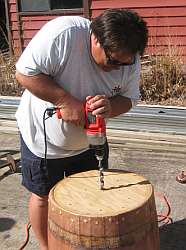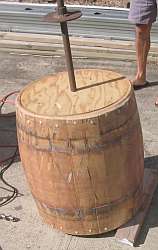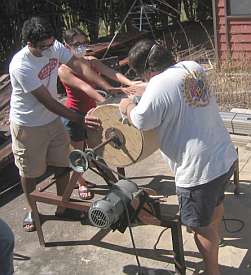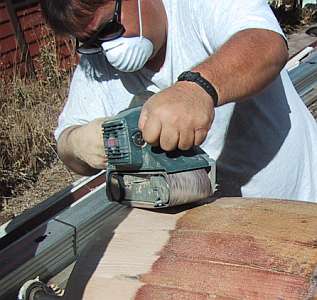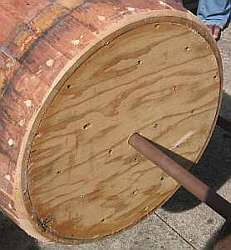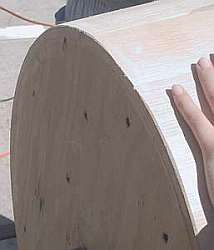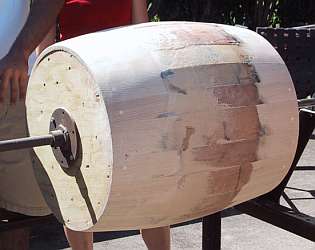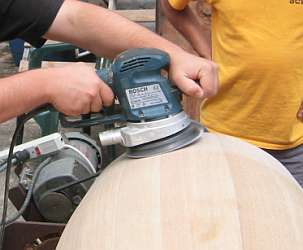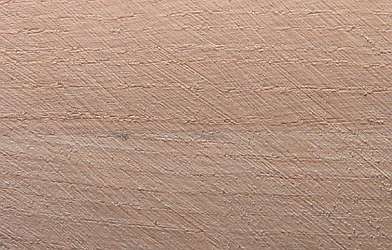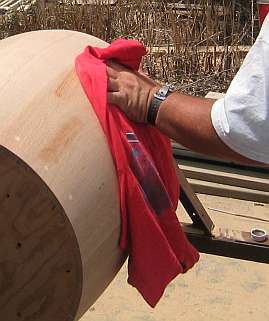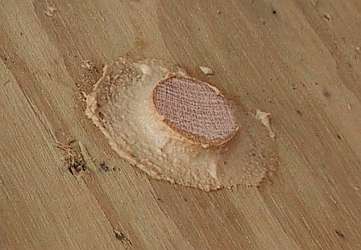|
Zenshin Daiko made a sanding jig that significantly reduces the time it takes to get through this stage. However, the jig is difficult to make and to store. All of this stage can be done without the jig: it will just take longer. If you do not have a similar jig, move to the next step (cutting out the center of the plywood inserts) and then sand; this will make the barrel easier to handle.
The first few stages of the sanding process are important to shape the barrel. Making it round, evening out unevenness, and removing surface blemishes are the goals at first. As you sand with the belt or orbital sanders, you will be able to feel the parts of the drum that are higher or lower, because the drum will seem to rise and fall as it rotates around. Don't try to push harder into the high spots to get rid of them, instead, try to hold the sander steady, letting the high spots push themselves harder into the sander as they rotate by.
First Stage:
Second Stage:
|

 Introduction
Introduction
 History
History
 Process
Process
 Thank Yous
Thank Yous
